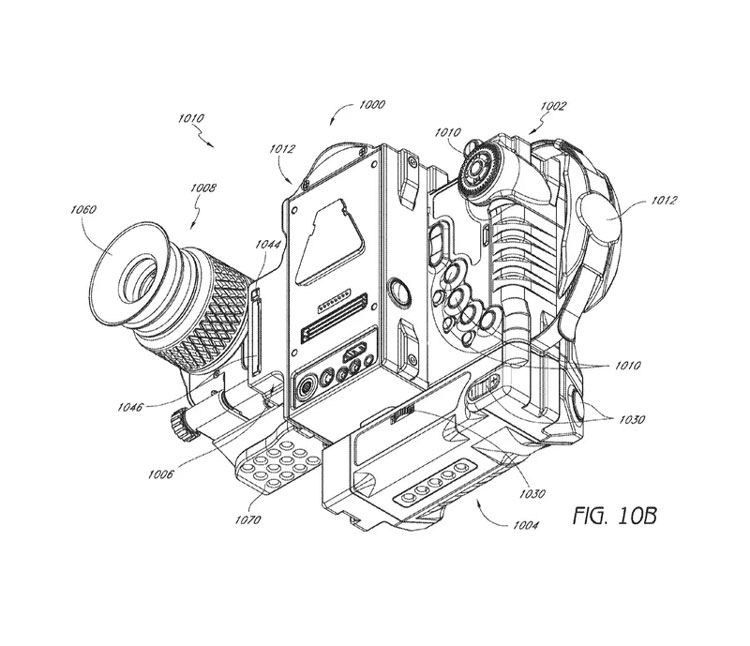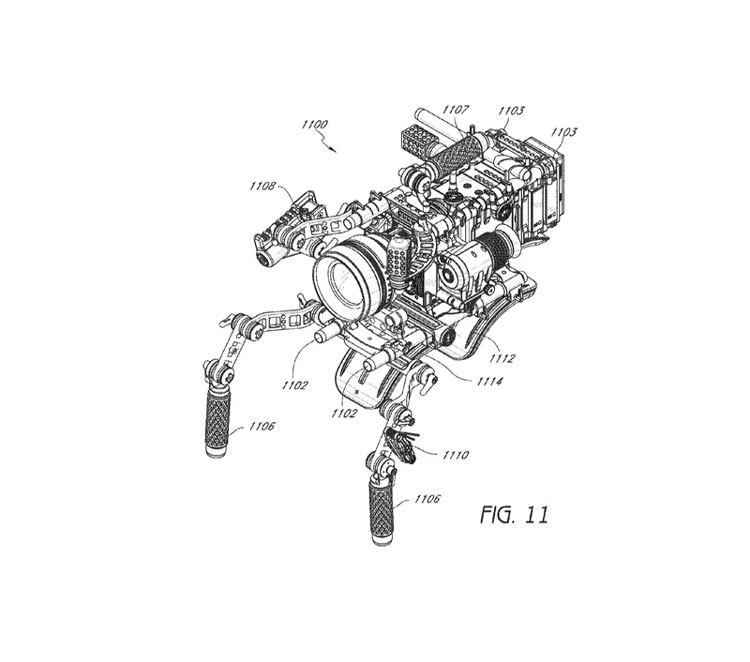Hydrogen One: A Modular Digital Camera and Cellular Phone
RED, a company best known for making high-quality digital cinema cameras, is going to dip into the smartphone market with something called the Hydrogen One. The company announced the phone with a screaming hot price tag of $1,195 and up, but revealed little else aside from a few things: it will offer 3D (and ‘4D’) visuals and audio that will ‘ASSAULT YOUR SENSES’, the phone will be carrier-unlocked and run Android, and it will be modular.
Studying a patent application that RED submitted for a ‘Modular Digital Camera and Cellular Phone’, we can get a sense of just how modular the company’s thinking. But if you thought the phone alone was crazy, buckle up. In the pending patent, RED imagines a smartphone like the Hydrogen One as the starting point of a modular camera system that can swap everything from the screen to the lenses to additional accessories.
Within the phone-focused parts of the patent application, RED actually isn’t working in terribly different territory from other companies that make modular phones. The company imagines a few practical modules that will connect to the Hydrogen One, like a spare battery, a speaker, or a projector. The difference between these and similar efforts like the Moto Z phones is that, in RED’s version, all these modules are the same shape. You’d essentially be stacking another version of the Hydrogen One’s rectangular shape to the back or front of the phone.
RED goes on to describe other rectangular add-ons, though, like an entirely separate camera module, which itself has a modular lens system. The user would attach this camera module to the back of the Hydrogen One smartphone, therefore covering up its rear camera, but replacing it with one that uses a better image sensor and image processor to capture video at up to (or even over) 8K resolution. This camera module could use CMOS, CCD, or even FOVEON sensors, and range from half-inch to full-frame or bigger in size. The user could also put other modules in between the smartphone and the camera module, like a battery, or extra hard drives, for instance. And that’s where things get weird.
RED takes the idea of these rectangular stacks of modules then imagines them as the nervous system, essentially, for a larger camera setup that looks a bit more like a DSLR. In this scenario, users would snap a better camera module and a battery or two onto their Hydrogen One, and to that block of tech they could attach a number of familiar photographic accoutrements.

The company illustrates a camera grip, complete with mechanical controls on the back and a shutter button on the front. There’s also an electronic viewfinder that can be attached on the left, or a second vertical grip on the bottom. This idea scales all the way up to showing the Hydrogen One becoming a shoulder-mounted cinema camera, essentially turning a smartphone into something that’s not all too different from RED’s bread and butter.
Seeing RED’s wildest ambitions for the Hydrogen One laid out like this conjures up even more questions than the phone’s announcement did. Could the adaptability of a modular system like this offer enough convenience to draw filmmakers — amateur or professional — away from existing camera setups (including RED’s own)?
My guess is that RED will try make some of these ideas materialize with Hydrogen One, but that the company would struggle to fulfill all of these dream configurations. Many professional cameras are already modular to a certain extent, but there’s a reason companies only go so far down that path. At a certain point, you’re able to get much more value (image quality, processing speed, battery life, heat dissipation, reduced size and weight) from a purpose-built design than from one that’s modular. Standing here, it’s hard to see how the sum of the Hydrogen One system’s parts could ever be greater than the whole of RED’s other offerings.
But if RED can use the Hydrogen One to at least shrink the gulf between a purpose-built camera and a modular system, while also offering some flashy new features, or a quicker upgrade path for users, maybe it can find a niche and grow it. After all, that’s what got the company here in the first place.



Comments are closed, but trackbacks and pingbacks are open.